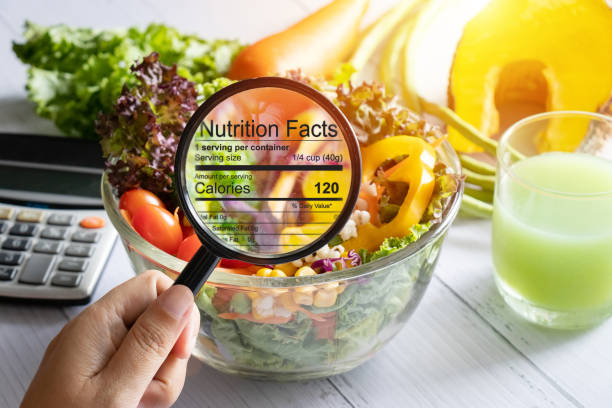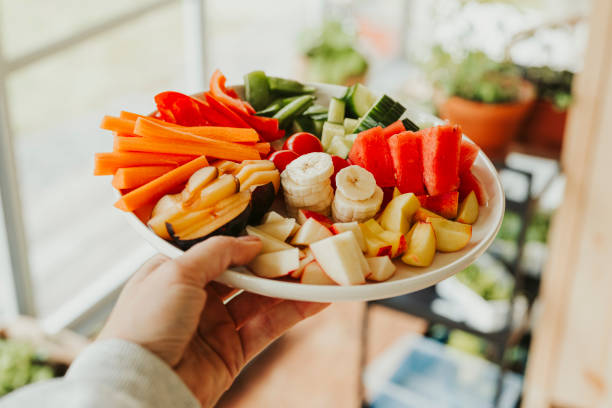In an era where food portions have become larger and more extravagant, understanding the importance of portion control is crucial for maintaining a healthy lifestyle. Portion control is not just about eating less; it’s about eating the right amount of food to meet your nutritional needs without overeating. This guide will explore the significance of portion control, its benefits, and practical tips to implement it in your daily life.
What is Portion Control?
Portion control refers to managing the quantity of food you consume at each meal. It involves serving and eating only the amount of food your body needs to function optimally. Portion control sizes can vary depending on the type of food, but the key is to balance calorie intake with physical activity and nutritional requirements.
Why is Portion Control Important?

1. Prevents Overeating
One of the primary benefits of portion control is its ability to prevent overeating. Overeating often results from consuming larger portions than necessary, leading to an excess of calories. By controlling portions, you can avoid consuming more calories than your body needs, which helps maintain a healthy weight.
2. Supports Weight Management
Portion control plays a vital role in weight management. When you eat appropriate portions, you can better manage your caloric intake, making it easier to maintain or achieve a healthy weight. This approach is often more sustainable and effective than restrictive diets, which can be challenging to adhere to long-term.
3. Enhances Digestion
Eating appropriate portion sizes can improve digestion. Overeating can overwhelm your digestive system, leading to discomfort, bloating, and other digestive issues. By consuming smaller, balanced portions, you allow your digestive system to function more efficiently, promoting better overall health.
4. Promotes Balanced Nutrition
Importance of portion control helps ensure that you get a balanced intake of essential nutrients. It encourages you to focus on a variety of foods, including fruits, vegetables, lean proteins, and whole grains. This balance is essential for meeting your body’s nutritional needs and supporting overall health.
5. Reduces Risk of Chronic Diseases
Overeating and consuming excessive portions can contribute to the development of chronic diseases such as obesity, type 2 diabetes, and cardiovascular issues. By practicing portion control, you can reduce your risk of these conditions and improve your long-term health outcomes.
How to Practice Portion Control

Implementing portion control in your daily routine can be straightforward with a few practical strategies. Here are some effective tips to help you get started:
1. Use Smaller Plates and Bowls
One of the easiest ways to control portions is to use smaller dishes. Research shows that people tend to eat more when they use larger plates and bowls. By switching to smaller dishes, you can create the illusion of a full plate while consuming fewer calories.
2. Measure Your Food
Measuring your food helps you understand what constitutes a standard portion size. Use measuring cups or a food scale to portion out servings of grains, proteins, and other foods. This practice helps you become more aware of portion sizes and can prevent overeating.
3. Read Nutrition Labels
Nutrition labels provide valuable information about portion sizes and calorie content. Pay attention to serving sizes listed on labels and compare them to what you are actually consuming. This awareness can help you make better choices and avoid consuming excess calories.
4. Listen to Your Body
Pay attention to hunger and fullness cues from your body. Eat slowly and mindfully, and stop eating when you feel satisfied rather than stuffed. It takes time for your brain to signal that you’re full, so eating slowly can help you recognize when you’ve had enough.
5. Plan Your Meals
Planning your meals in advance can help you manage portions more effectively. Prepare balanced meals with appropriate portions of protein, vegetables, and whole grains. This practice ensures you have healthy options readily available and can help prevent overeating.
6. Avoid Eating from the Package
Eating directly from the package can lead to mindless eating and larger portions. Instead, portion out your food into a separate dish or bowl. This simple step can help you control the amount you consume and prevent overeating.
7. Stay Hydrated
Sometimes, thirst can be mistaken for hunger. Drinking water throughout the day can help you stay hydrated and reduce unnecessary snacking. Aim for at least eight glasses of water per day to support overall health and proper digestion.
Portion Control and Special Diets

Portion control is beneficial for various dietary needs and conditions. For instance:
1. Diabetes Management
For individuals with diabetes, portion control is crucial for managing blood sugar levels. Eating balanced portions of carbohydrates, proteins, and fats can help regulate blood sugar and improve overall glycemic control.
2. Heart Health
Controlling portion sizes can support heart health by reducing excessive calorie intake and promoting a balanced diet. This approach can help manage cholesterol levels and reduce the risk of cardiovascular diseases.
3. Weight Loss
For those looking to lose weight, portion control is an effective strategy. By consuming smaller portions and focusing on nutrient-dense foods, individuals can create a calorie deficit and achieve their weight loss goals.
Conclusion
Portion control is a fundamental aspect of healthy eating and overall wellness. By understanding the importance of portion sizes and implementing practical strategies, you can manage your calorie intake, support balanced nutrition, and reduce the risk of chronic diseases. Adopting these habits not only promotes a healthier lifestyle but also contributes to long-term well-being. Importance of portion control into your daily routine and experience the positive impact it can have on your health.
FAQ About Portion Control
1. What is a healthy portion size?
A healthy portion size can vary based on the type of food. Generally, aim for a serving of protein about the size of your palm, a serving of vegetables about the size of your fist, and a serving of grains about the size of your cupped hand. For specific portion sizes, refer to nutrition guidelines and food labels.
2. How can I estimate portion sizes without measuring tools?
You can estimate portion sizes using common objects as references. For example, a serving of meat should be about the size of a deck of cards, and a serving of pasta should be about the size of a baseball. Visual cues can help you gauge portion sizes when you don’t have measuring tools.
3. Can portion control help with emotional eating?
Portion control can help with emotional eating by promoting mindfulness and awareness of what and how much you are eating. By focusing on portion sizes and eating slowly, you can reduce the tendency to eat in response to emotions rather than true hunger.
4. Is portion control the same as calorie counting?
While portion control and calorie counting both involve managing food intake, they are not the same. Portion control focuses on eating appropriate amounts of food, while calorie counting involves tracking the number of calories consumed. Both can be effective tools for managing weight and improving health.
5. How can I handle portion sizes when dining out?
When dining out, consider sharing dishes with others or asking for a to-go box at the start of the meal to manage portion sizes. Many restaurants serve larger portions than necessary, so portioning out your meal can help you avoid overeating.





